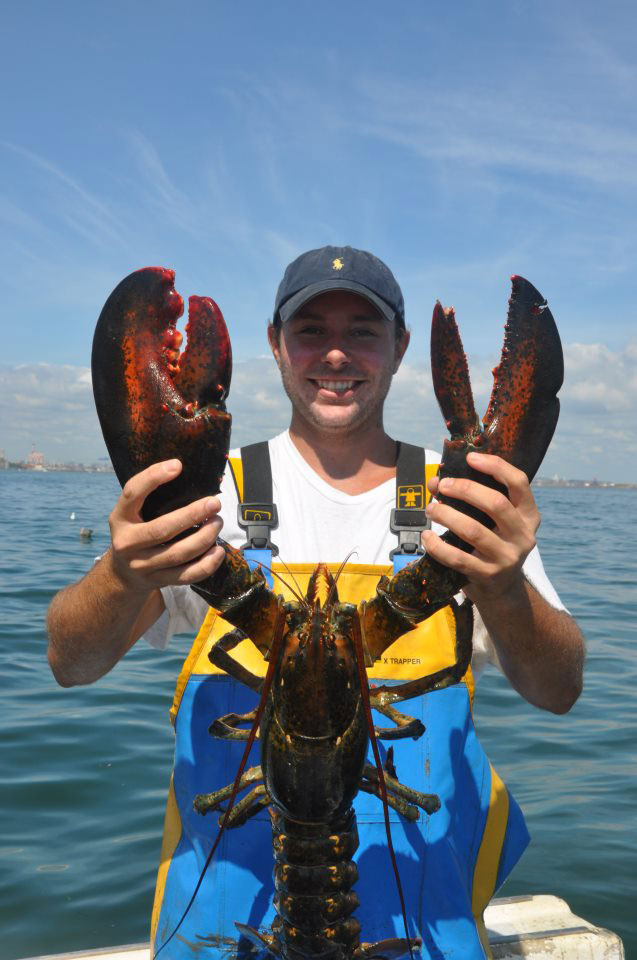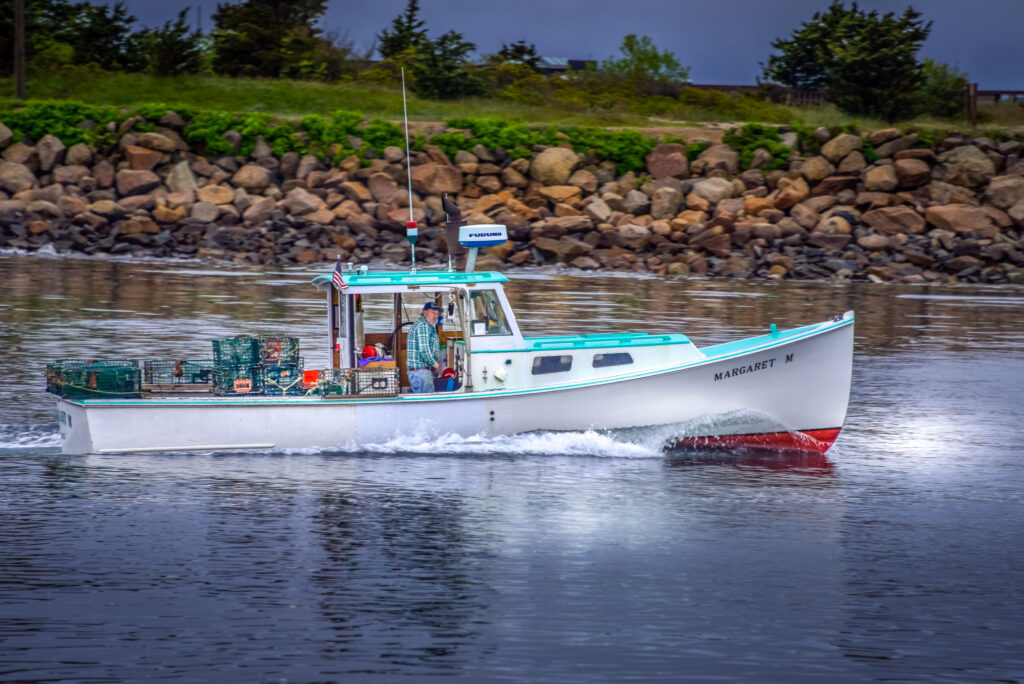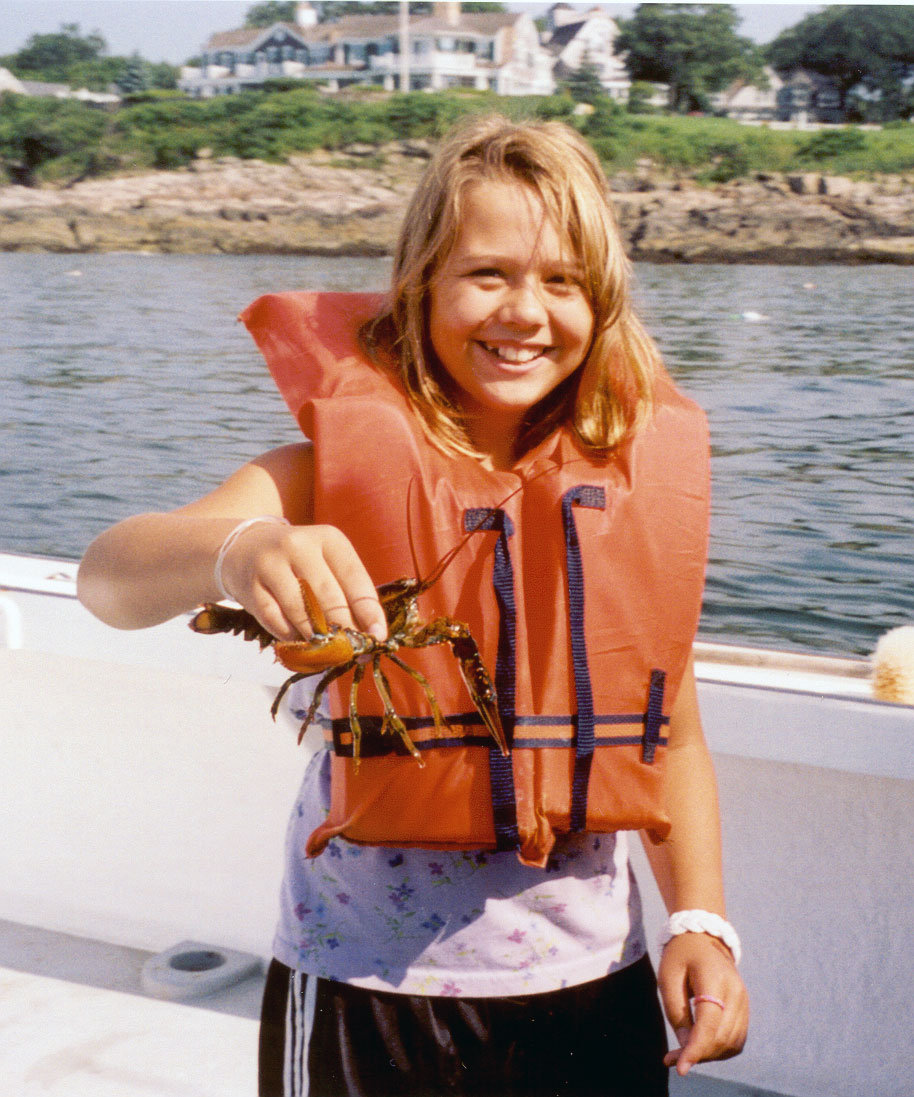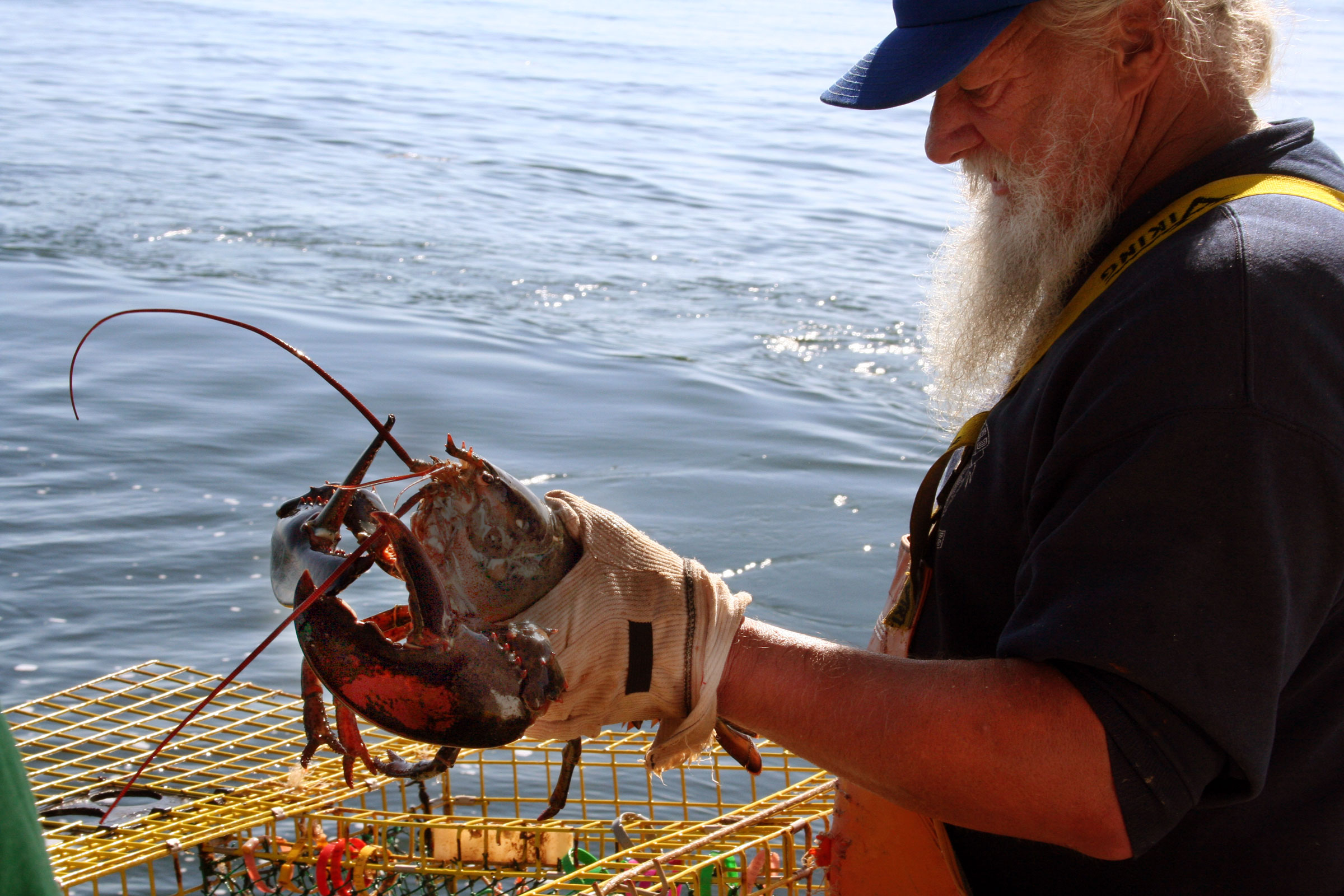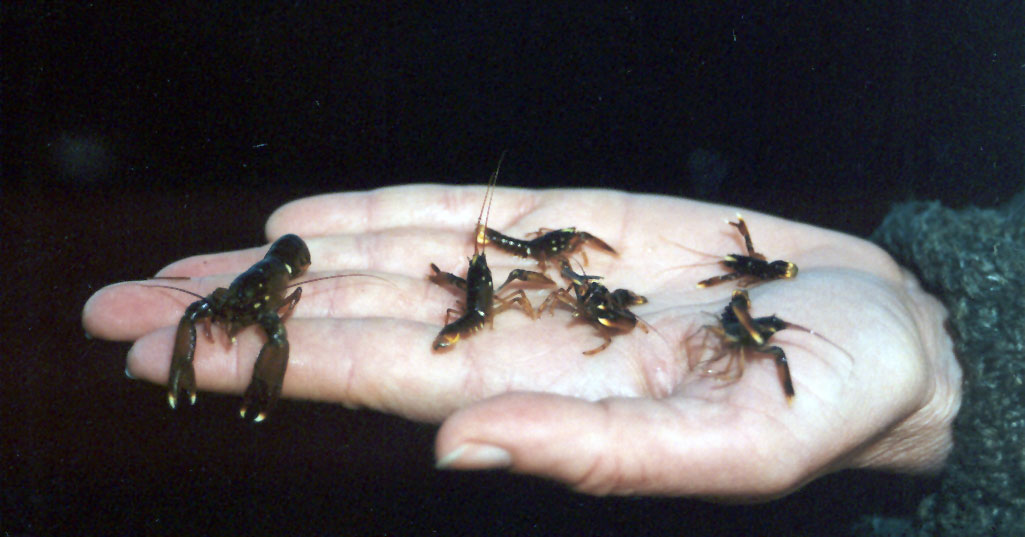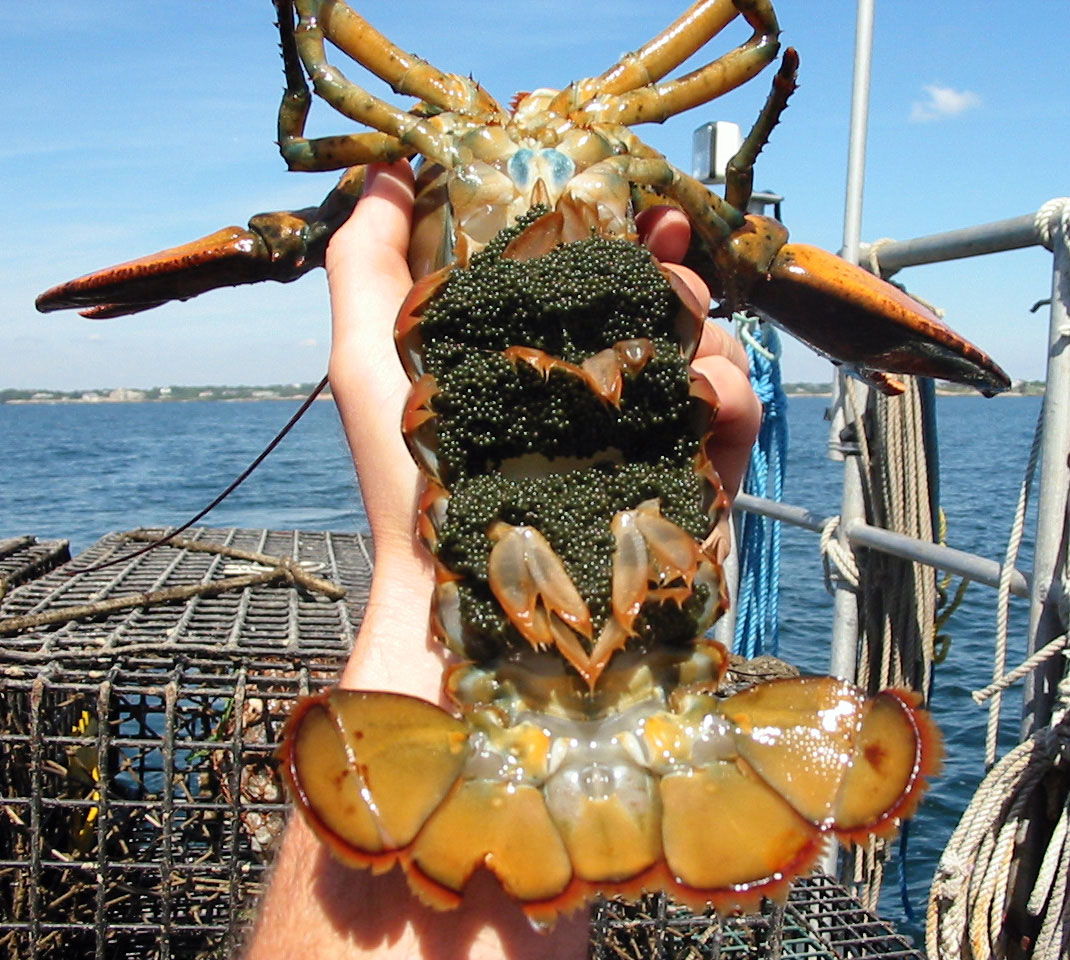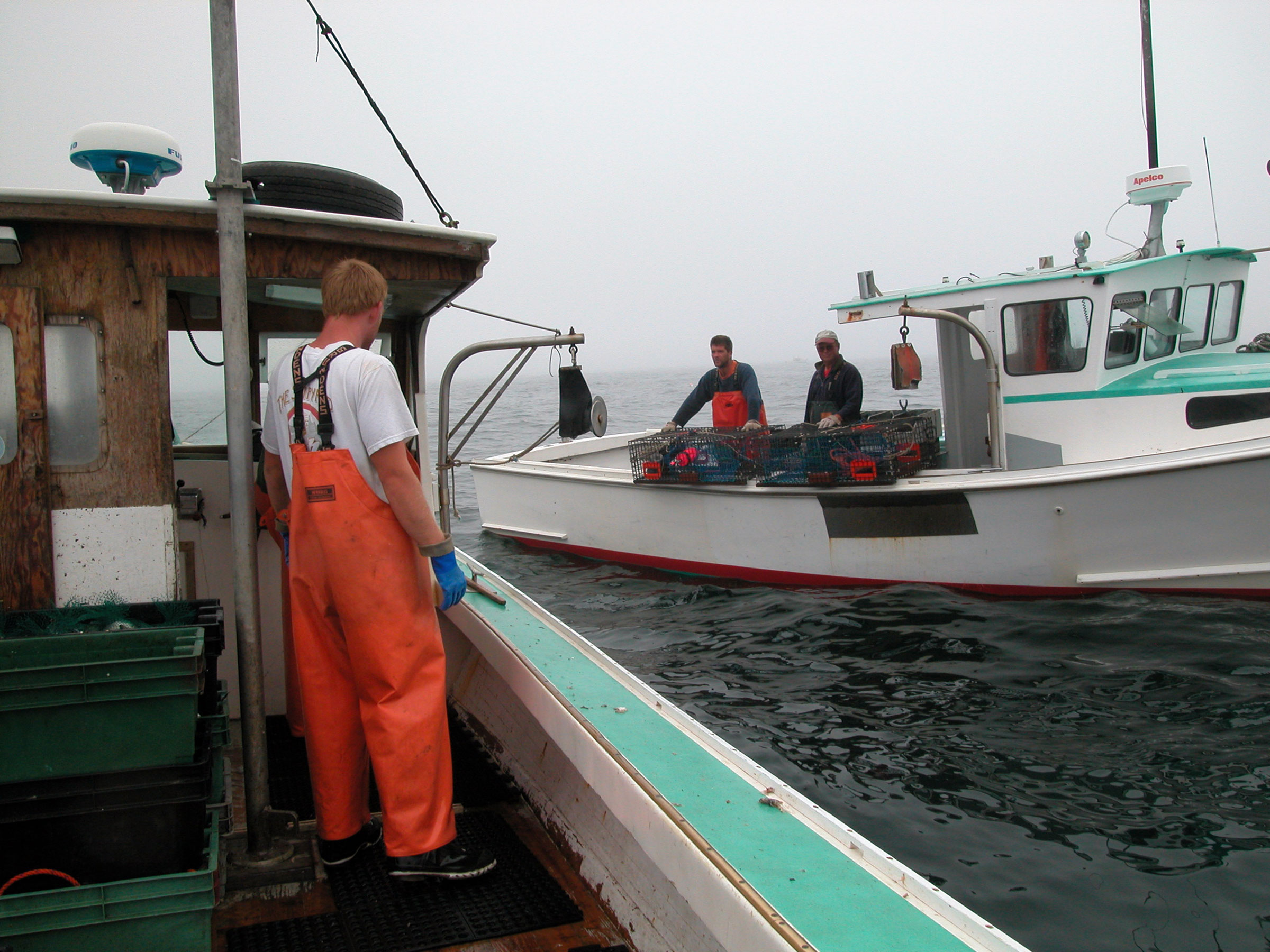American Lobster
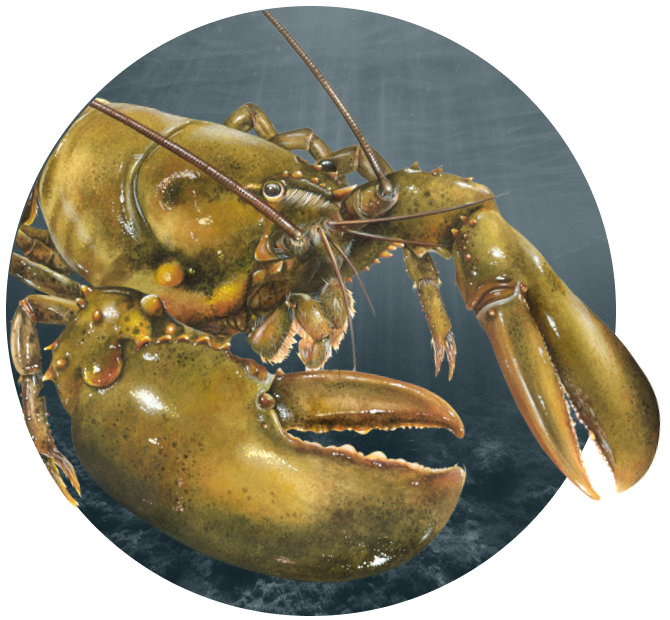
Latest News and Resources
-
American Lobster FMP Review – 2024
-
American Lobster Species Management Overview
-
2025 Annual Meeting Summary — October 2025
-
American Lobster Management Board Presentations — October 2025
-
American Lobster Benchmark Stock Assessment Finds GOM/GBK Stock Not Depleted but Experiencing Overfishing & SNE Stock Significantly Depleted but Not Experiencing Overfishing
-
2025 Annual Meeting Agenda and Public Comment Guidelines
-
American Lobster Management Board Annual Meeting Materials — October 2025
-

Gulf of Maine / Georges Bank
Population Abundance
Not depleted

Gulf of Maine / Georges Bank
Fishing Mortality
Overfishing is occurring
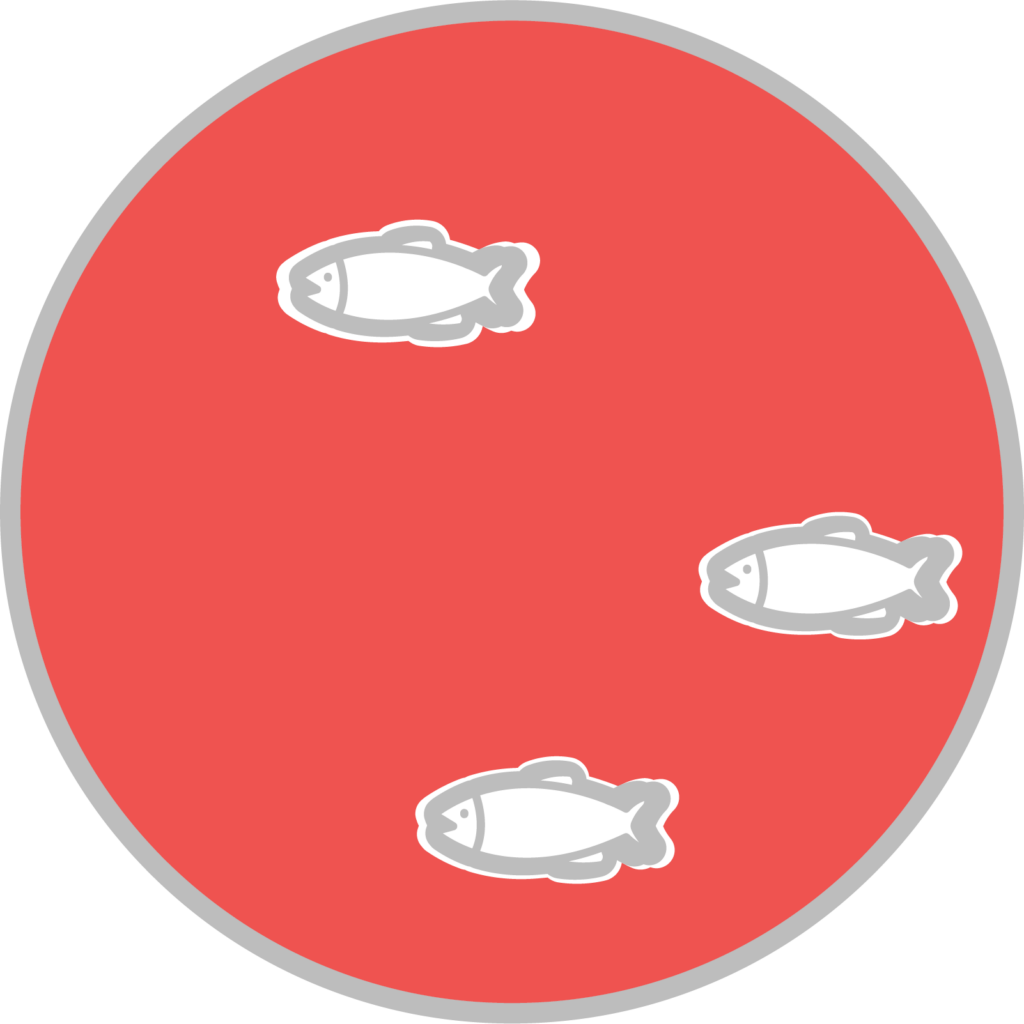
Southern New England
Population Abundance
Depleted
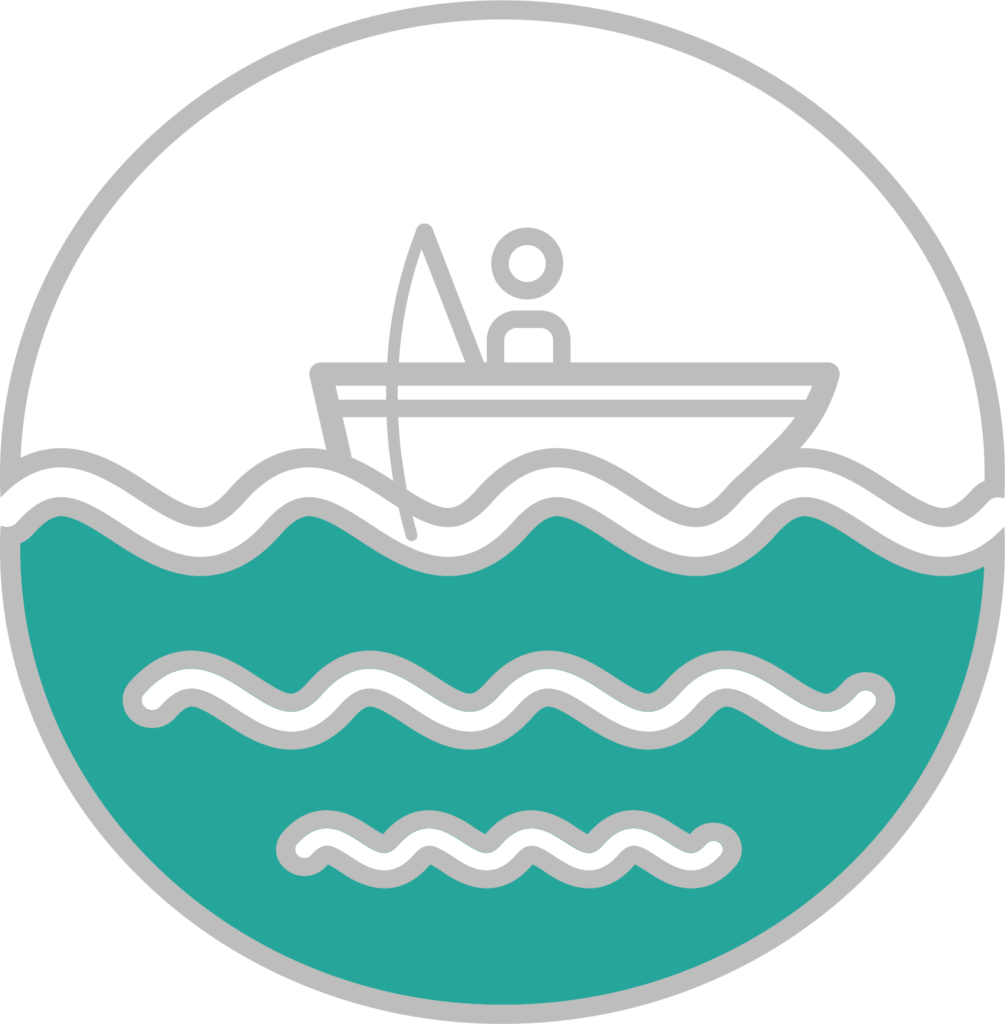
Southern New England
Fishing Mortality
Overfishing not occurring
Current Status
Stock status based on 2025 benchmark assessment. GOM/GBK abundance and recruitment showing declines from recent highs. SNE abundance and recruitment lowest on record.
Meeting Calendar
Next Meeting
No events found
-
Recent Management Actions
Action
Status
Contacts
- Caitlin Starks, Senior FMP Coordinator (CStarks@asmfc.org)
- Management Board, Renee Zobel, Chair
- Technical Committee, Tracy Pugh, Chair
- Advisory Panel, Grant Moore, Chair
Species Information
The American lobster is a cornerstone of Atlantic coastal fisheries, supporting one of the most valuable fisheries in the region. While populations in the Gulf of Maine and Georges Bank remain healthy, the Southern New England stock faces significant challenges due to environmental changes and recruitment failure. Through adaptive management and conservation efforts, the Commission works to balance sustainable harvests with the resilience of this vital species across its diverse habitats.
Management
American lobster is managed under Amendment 3 to the Interstate Fishery Management Plan (FMP) and its Addenda (I – XXVI). The goal of the American lobster management plan is to maintain a healthy lobster resource and a management regime which provides for continued harvest, opportunities for participation, and cooperative development of conservation measures by all stakeholders. Amendment 3 established seven lobster conservation management areas (LCMAs): Inshore and offshore GOM (Area 1), Inshore SNE (Area 2), Offshore Waters (Area 3), Inshore and offshore Northern Mid-Atlantic (Area 4), Inshore and offshore Southern Mid-Atlantic (Area 5), Long Island Sound (Area 6) and Outer Cape Cod). Lobster Conservation Management Teams (LCMTs), composed of industry representatives, were formed for each management area. The LCMTs are charged with advising the American Lobster Board and recommending changes to the management plan within their areas. The commercial fishery is primarily controlled through minimum/maximum size limits, trap limits, and v-notching of egg-bearing females.
After the 2009 and 2015 assessments indicated the critically depleted condition of the SNE stock, the Board approved Addenda XVII – XXII, which implemented a suite of measures to reduce exploitation and allow the SNE stock to rebuild.
These measures included a v-notching program, trap reductions, closed seasons for certain areas, and trap consolidation/transferability programs. The Board also considered a suite of management measures to achieve a 5% increase in egg production; however, it decided not to pursue this management change given concern that the proposed measures would not significantly improve the stock. The Board continues to discuss future management of the SNE stock in light of environmental changes.
In 2018, the Board approved Addendum XXVI. The Addendum addresses concerns regarding deficits in existing reporting requirements by expanding the mandatory harvester reporting data elements, improving the spatial resolution of harvester data, establishing a 5-year timeline for implementation of 100% harvester reporting, and prioritizing the development of electronic harvester reporting. In addition, the Addendum improves biological sampling requirements by establishing a baseline of ten sampling trips per year in the American lobster/Jonah crab fishery, and encourages states with more than 10% of coastwide landings in either the lobster or Jonah crab fisheries to conduct additional sampling trips.
Addendum XXIX, approved in 2022, expanded Addendum XXVI reporting improvements by establishing electronic tracking requirements for federally-permitted vessels in the American lobster and Jonah crab fisheries. Specifically, electronic tracking devices will be required for vessels with commercial trap gear area permits for Lobster Conservation Management Areas (LCMAs) 1, 2, 3, 4, 5, and Outer Cape Cod (OCC) to collect high resolution spatial and temporal effort data. Through this action the Board seeks to significantly improve stock assessment, identify areas where lobster fishing effort might present a risk to endangered North Atlantic right whales, and document the footprint of the fishery to help reduce spatial conflicts with other ocean uses like wind energy development and aquaculture.
In May 2023, the Board approved Addendum XXVII as a proactive measure to improve the resiliency of the Gulf of Maine/Georges Bank (GOM/GBK) stock based on concerns about persistent low lobster settlement over the last decade. Addendum XXVII established a trigger mechanism to implement management measures – specifically gauge and escape vent sizes – to provide additional protection of the GOM/GBK spawning stock biomass (SSB). It also included changes to management measures for Lobster Conservation Management Areas (LCMAs) 1, 3, and Outer Cape Cod (OCC) to improve the consistency of measures across the GOM/GBK stock. In October 2023, management measures, including a series of gradual changes to gauge and escape vent sizes in LCMAs 1, 3 and OCC, were triggered based on an observed decline in recruit abundance indices. Addendum XXX was approved in August 2024 to clarify the Commission’s recommendation that the increased minimum gauge size in LCMA 1 triggered under Addendum XXVII would also apply to foreign imports of American lobster.
In February 2025, the Board approved Addendum XXXI to postpone the implementation of the Addendum XXVII measures to July 1, 2025 with the goal of reducing negative impacts to the US and Canadian lobster industries in 2025 and allowing Canada more time to consider implementing complementary management measures. However, the Board approved Addendum XXXII in May 2025, which repeals all gauge and escape vent size measures from Addendum XXVII. Addendum XXXII addresses continued economic concerns and provides the Gulf of Maine states the opportunity to collaborate with the lobster industry to identify alternative conservation approaches.
Stock Status
The 2025 American Lobster Benchmark Stock Assessment and Peer Review Report describes contrasting conditions for the two American lobster stocks. The results indicate the Gulf of Maine and Georges Bank (GOM/GBK) stock is not depleted but has declined 34% since peak levels in 2018, and overfishing is occurring with recent exploitation just above the exploitation threshold. Conversely, the Southern New England (SNE) stock remains significantly depleted with record low abundances for all life stages in recent years.
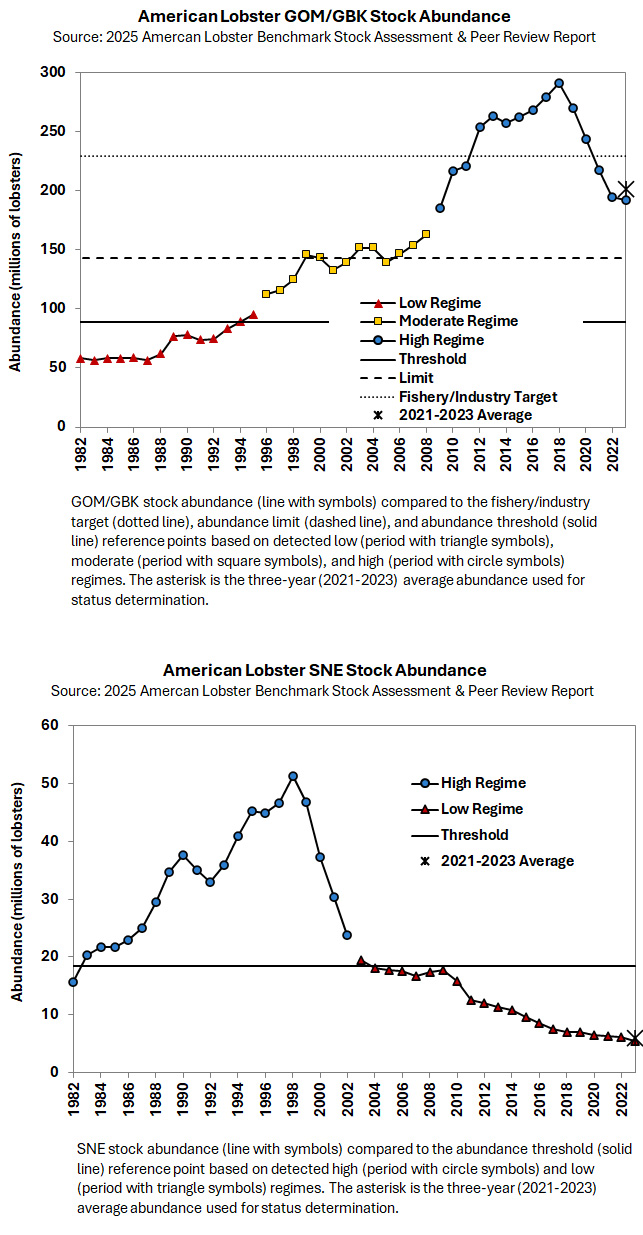
Extensive research has highlighted the influence of the environment on American lobster life history and population dynamics, with temperature standing out as the primary driver among the critical environmental variables. Further, environmental conditions in the American lobster’s range are changing at some of the fastest rates in the world. Therefore, considering these environmental influences was a focal point of this stock assessment. Environmental data time series analyzed in this assessment included water temperatures at several fixed monitoring stations throughout the lobster’s range, average water temperatures over large areas such as those sampled by fishery-independent surveys, oceanographic processes affecting the environment, and other environmental indicators such as lobster prey abundance.
Environmental data were analyzed for regime shifts, which indicate a significant difference in the lobster’s environment and population dynamics from one time period to another. Regime shifts can impact a stock’s productivity, recruitment levels, and ability to support different levels of fishing pressure. Temperature time series were also analyzed to quantify the effect of temperature on the catchability of lobster in surveys and adjust annual survey estimates to account for temperature-driven changes in catchability.
Model-estimated abundance time series were also analyzed for shifts that may be attributed to changing environmental conditions and new baselines for stock productivity. The GOM/GBK stock shifted from a low abundance regime encompassing the early 1980s through 1995 to a moderate abundance regime from 1996-2008 and shifted once again to a high abundance regime from 2009-2018. The SNE stock shifted from a high abundance regime during the early 1980s through 2002 to a low abundance regime during 2003-2018. These results were used to structure trend-based reference points, consistent with the 2020 assessment.
Three reference points are used to characterize stock abundance. The abundance threshold is calculated as the average of the three highest abundance years during the low abundance regime. A stock abundance level below this threshold is considered significantly depleted and in danger of stock collapse. This was the only abundance reference point recommended for the SNE stock due to its record low abundance and low likelihood of exceeding this threshold in the near future. The abundance limit is calculated as the median abundance during the moderate abundance regime. Stock abundance that falls below this limit is considered depleted because the stock’s ability to replenish itself is diminished. The fishery/industry target is calculated as the 25th percentile of the abundance during the high abundance regime. In this case, when abundance falls below this target, the stock’s ability to replenish itself is not jeopardized, but it may indicate a degrading of economic conditions for the lobster fishery.
Two reference points are used to evaluate the fishing mortality condition of the stocks. The exploitation threshold is calculated as the 75th percentile of exploitation during the current abundance regime. The stock is considered to be experiencing overfishing if exploitation exceeds the exploitation threshold. The exploitation target is calculated as the 25th percentile of exploitation during the current abundance regime. The stock’s fishing mortality condition is considered favorable if the three-year average exploitation is less than or equal to the target. This overfishing reference point serves as an extra safeguard against sudden increases in exploitation that may not be explained by decreasing abundance.
Gulf of Maine/Georges Bank
Based on the abundance reference points, the GOM/GBK stock condition is favorable. The average abundance from 2021-2023 (202 million lobsters) has declined below the fishery/industry target (229 million lobsters) but remains above the abundance limit (143 million lobsters) and abundance threshold (89 million lobsters). Recruitment and spawning stock biomass estimates have declined in recent years from record highs.
The average exploitation from 2021-2023 (0.465) was just above the exploitation threshold (0.464), indicating overfishing is occurring. However, there are several caveats associated with the fishing mortality condition. Lobster fisheries are efficient at removing the harvestable part of the population that enters the fishery each year, so trends in landings closely track changes in population abundance. This relationship results in relatively stable exploitation during periods of consistent regulations, even during periods of rapid and consistent abundance increases and decreases. This complicates our understanding of the population’s response to fishing pressure. The stability of exploitation rates creates a narrow range of values separating favorable and unfavorable exploitation status, making the overfishing status determination sensitive to data and model uncertainty.
Model-free indicators of young-of-year (YOY) abundance have shown increases from lows in the 2010s, though remain neutral and below the positive levels observed in the 2000s. Abundance indicators of older lobsters generally showed similar results to the assessment model, with abundance declines from peaks since the last assessment. Spatial patterns within the stock appear to be playing an important role in driving the overall GOM/GBK stock dynamics as described by the model, with stronger declines evident in the inshore surveys and particularly the ME/NH survey compared to the offshore NEFSC survey. Similar patterns have occurred in exploitation with higher exploitation in the inshore area. and lower exploitation elsewhere. The new recruit-dependency indicators show inshore areas are highly dependent on incoming recruitment, which is a negative determination for exploitation. The encounter rate indicators show some contraction in the distribution within these inshore areas, likely related to declines in abundance. Landings and revenue fishery performance indicators show declining trends but remain positive.
Temperature data indicate that environmental conditions, particularly bottom water temperatures, remain positive in GOM/GBK and shell disease prevalence, although increasing in some areas, remains relatively low.
Given the rapid declines in abundance to levels below the fishery/industry target and the overfishing status, the assessment recommends the Management Board immediately initiate a Management Strategy Evaluation (MSE) to clearly define management objectives (across all stakeholders), better understand socioeconomic status and concerns, and identify potential management tools that might be supported by the industry and prevent further declines towards biological thresholds.
Southern New England
SNE stock abundance increased from the early 1980s, peaked during the late 1990s, then declined steeply through the early 2000s to a record low in 2023. The 2025 Assessment indicates the SNE stock is significantly depleted and overfishing is not occurring. The average abundance from 2021-2023 (6 million lobsters) was well below the abundance threshold (18 million lobsters). The average exploitation from 2021-2023 (0.258) fell below the exploitation threshold (0.286) and exploitation target (0.267).
Abundance indicators agree with model results and indicate declines to record low abundances for all life stages in recent years. The contraction of the SNE stock has continued and is now evident in offshore as well as inshore areas. Fishery performance indicators for SNE show continued declines in landings and revenue. Environmental conditions have worsened in the inshore region, and evidence suggests that the productivity of the stock is severely compromised with increased thermal stress and disease.
Although continued adverse environmental indicators suggest environmental conditions are major contributors to the poor abundance status, the assessment states significant management action would provide the best chance of stabilizing or improving stock abundance and reproductive capacity.
Peer Review Panel Recommendations
The Panel endorsed the stock assessment, finding that it meets and exceeds the standard for best scientific information available and provides a suitable foundation for management. The Panel commended the addition of socioeconomic data that provide insight into changes in the fishery and the considerable efforts to evaluate environmental impacts on the stock. Additionally, the Panel cautioned against placing too much emphasis on environmental effects and discounting the effects of fishing on the lobster populations.
Commercial & Recreational Fisheries
The American lobster fishery is one of the most valuable fisheries along the Atlantic coast and has seen an incredible expansion in landings over the last 40 years. Between 1950 and 1975, landings were fairly stable around 30 million pounds; however, from 1976 to 2008 the average coastwide landings tripled, exceeding 98 million pounds in 2006. Landings continued to increase until reaching a high of 159 million pounds in 2016, but have been trending downward since then. In 2024, coastwide commercial landings were approximately 112.6 million pounds, a 7% decrease from 2023. The ex-vessel value for all lobster landings in 2024 was approximately $617 million dollars.
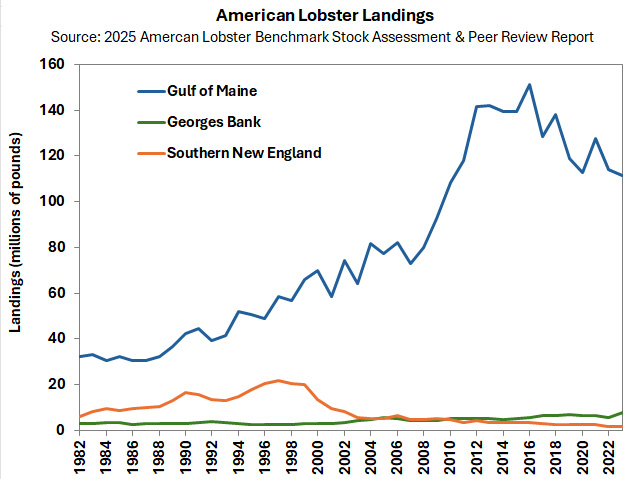
The vast majority of these landings came from GOM/GBK, where the stock abundance remains high compared to the time series average. The GOM fishery accounts for the largest portion of US lobster landings, averaging 82% of the annual landings since 1982, and is predominately carried out by small vessels in nearshore waters (< 12 miles from shore). The GBK fishery is considerably smaller, averaging 5% of the landings since 1982, and is predominantly carried out by larger vessels making multi-day trips to offshore waters. Total GOM/GBK annual landings increased from a stable period in the 1980s, averaging approximately 35.4 million pounds, through the 1990s and 2000s, exceeding 100 million pounds for the first time in 2009. Landings from 2012 through 2018 stabilized at record levels, averaging 145.7 million pounds. Landings have declined since the 2020 assessment, averaging 123.6 million pounds from 2019-2023.
Historically, the SNE fishery was predominately an inshore fishery. Landings peaked in 1997 at 21.8 million pounds and accounted for 26% of total US lobster landings. Following the peak, SNE landings have continuously declined to record lows, now accounting for only 1% of US landings. The fishery has also shifted to a predominantly offshore fishery as inshore abundance declined at a faster rate.
Lobster pots are the predominant commercial gear, with a small percentage of the landings caught by trawls. Lobster is also taken recreationally with pots and by hand while SCUBA diving. The overall quantity of recreational landings is unknown but is likely a negligible source of removals.
Life History
American lobster are bottom-dwelling crustaceans that are widely distributed over the continental shelf of North America. In the inshore waters of the U.S., they are most abundant from Maine through New Jersey, with abundance declining from north to south. Offshore, they occur from Maine through North Carolina. The species was previously divided into three biological stock areas which included GOM, GBK, and SNE. However, data showing evidence of significant seasonal migrations of large female lobster between GOM and GBK suggests these two stocks are not closed populations. As a result, the GOM and GBK were combined into a single biological unit (GOM/GBK).
Lobster are solitary and territorial, living in a variety of habitats as long as there is a burrow or crevice where they can take cover. They usually remain within a home range of about 5-10 square km. In offshore areas, large mature lobster make seasonal migrations inshore to reproduce. In southern inshore areas, large lobster may move to deeper, cooler waters seasonally or permanently.
Reproduction and growth are linked to the molting (shedding of the lobster’s exoskeleton or shell) cycle. Lobster periodically shed (or molt) their shell to allow for growth and mating to occur. Sperm is deposited in “soft” (recently molted) females and stored internally until the eggs are released (technically referred to as extrusion), which can be as long as two years. When extruded, the eggs are fertilized and attached to the underside of the female, where they are carried for 9 to 11 months before hatching. Females hatch their eggs from mid-May to mid-June. Once hatched, lobster larvae transition through five stages. For the first four stages larvae are planktonic, swimming at or near the water surface. At the fifth larval stage, juveniles sink to the ocean floor where they remain for the rest of their lifetime. Lobster reach market size in about 4 to 9 years, depending on water temperature and other biological factors.
Temperature is an important factor influencing lobster metabolism, spawning, development, and growth. When a female lobster extrudes eggs, temperature directly impacts the length of time the eggs are carried until hatching occurs, when surface water temperatures are above 12oC. Lobster generally avoid water temperatures below 5oC and above 18oC. Prolonged temperatures above 20.5oC can induce respiratory stress in lobster and have been shown to increase the incidence of shell disease.
News & Resources
Explore recent news, management updates, and scientific reports to gain a deeper understanding of ongoing conservation efforts and sustainability strategies.
-
-
From the Commissioner Manual
-
A summary of all the board meetings, press releases and motions from the 2025 Annual Meeting.
-
-
The Commission’s American Lobster Management Board received the results of the 2025 American Lobster Benchmark Stock Assessment and Peer Review Report, which presents contrasting results for the two American lobster stocks in US waters. The Gulf of Maine and Georges Bank (GOM/GBK) stock is not depleted but has declined 34% since peak levels in 2018,…
-
-
Consider 2025 American Lobster Benchmark Stock Assessment Action, Presentation of Stock Assessment Report (T. Pugh), Presentation of Peer Review Panel Report (T. Miller), Consider Acceptance of Benchmark Stock Assessment and Peer Review Report for Management Use, Consider Management Response, if necessary; Consider Reports from Gulf of Maine States on Industry Surveys and Meetings (C. Wilson,…
-
-
-
The American Lobster Benchmark Stock Assessment Review Workshop is scheduled for September 2 – 5, 2025 at the Marine Biological Laboratory in the Swope Building on North Street, Woods Hole, MA
-
A summary of all the board meetings, press releases and motions from the 2025 Summer Meeting.
-
-
The American Lobster Management Board of the Atlantic States Marine Fisheries Commission convened in the Jefferson Ballroom of the Westin Crystal City Hotel, Arlington, Virginia, via hybrid meeting, in-person and webinar; Tuesday, August 5, 2025, and was called to order at 10:00 a.m. by Chair Renee Zobel.
-
Combined materials for all Boards convening at the ASMFC Summer Meeting
-
Update on On-Demand Gear Research and Technology; Update on Joint New England and Mid-Atlantic Fishery Management Council Alternative Gear Marking Framework and American Lobster Advisory Panel Report; Update from Maine and New Hampshire on Industry Meetings; Progress Update on American Lobster Benchmark Stock Assessment
Get Hooked on ASMFC News
Dive into the latest updates and catch all the important news by joining our newsletter mailing list. Stay in the loop with meeting agendas, fisheries management news, and more.


